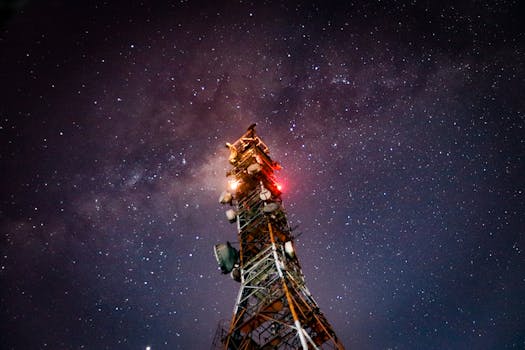
Starlink: Revolutionizing Global Connectivity with Satellite Internet
Starlink, the focus keyword, is a satellite constellation developed by SpaceX, aiming to provide high-speed, low-latency internet connectivity worldwide. The project, launched in 2019, has been steadily expanding its reach, with thousands of satellites already in orbit. The goal of Starlink is to bridge the digital divide, providing internet access to underserved and remote communities, and transforming the way we communicate.
SpaceX, founded by Elon Musk, has been at the forefront of space technology innovation. With Starlink, the company is pushing the boundaries of what is possible with satellite internet. The constellation is designed to provide fast, reliable, and affordable internet connectivity, with speeds of up to 1 Gbps and latency as low as 20 ms. This makes it an attractive option for a wide range of applications, from remote work and online education to gaming and streaming.
The Technology Behind Starlink
Starlink uses a constellation of low-Earth orbit (LEO) satellites, which are significantly closer to the Earth than traditional geostationary satellites. This proximity reduces latency and improves signal strength, allowing for faster and more reliable internet connectivity. The satellites are equipped with advanced technology, including Hall effect thrusters, which enable them to maintain their position and altitude. Each satellite is also equipped with a phased array antenna, which allows it to communicate with multiple users simultaneously.
The Starlink system also includes a network of ground stations, which are responsible for communicating with the satellites and routing internet traffic. These ground stations are located around the world, providing redundant and backup connectivity in case of outages or maintenance. The system is designed to be highly resilient and fault-tolerant, ensuring that users remain connected even in the event of technical issues.
Benefits and Applications of Starlink
Starlink has the potential to revolutionize the way we communicate and access information. One of the most significant benefits of the system is its ability to provide internet connectivity to remote and underserved communities. This can have a profound impact on education, healthcare, and economic development, enabling people to access vital services and opportunities that were previously out of reach.
Starlink also has a range of applications in fields such as emergency response, disaster recovery, and environmental monitoring. The system can provide critical connectivity during natural disasters, such as hurricanes or wildfires, when traditional communication infrastructure is damaged or destroyed. It can also be used to monitor and track environmental changes, such as deforestation or ocean health, providing valuable insights for conservation and sustainability efforts.
Challenges and Controversies Surrounding Starlink
While Starlink has the potential to transform global connectivity, it is not without its challenges and controversies. One of the main concerns is the impact of the satellite constellation on the night sky, with many astronomers and scientists expressing concerns about the potential for light pollution and interference with astronomical observations.
There are also concerns about the environmental impact of the satellites, particularly in terms of space debris and the potential for collisions with other objects in orbit. SpaceX has taken steps to mitigate these risks, including the use of de-orbiting technology to remove satellites from orbit at the end of their lifespan. However, the issue remains a topic of debate and discussion among experts and regulators.
Conclusion and Future Developments
Starlink is a groundbreaking project that has the potential to revolutionize global connectivity and transform the way we communicate. While there are challenges and controversies surrounding the project, the benefits of Starlink are undeniable. As the constellation continues to expand and improve, we can expect to see new and innovative applications of the technology, from remote work and online education to environmental monitoring and disaster response.
SpaceX is committed to continuing the development and improvement of Starlink, with plans to launch thousands of additional satellites in the coming years. The company is also working to improve the performance and affordability of the system, with a range of new technologies and innovations in the pipeline. As the project continues to evolve, it will be exciting to see the impact that Starlink has on global connectivity and the many communities around the world that it serves.




